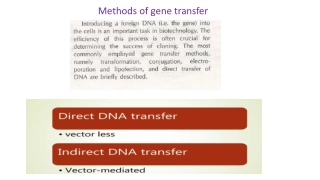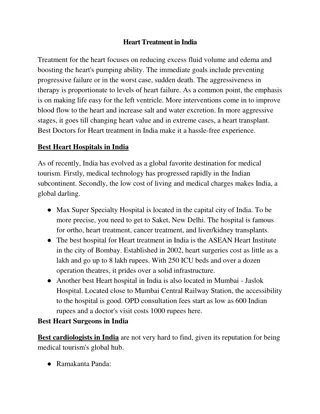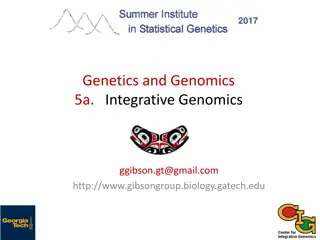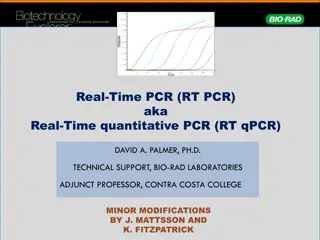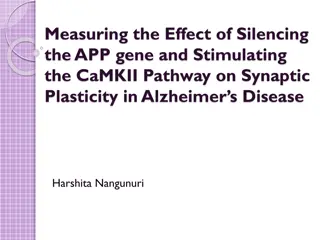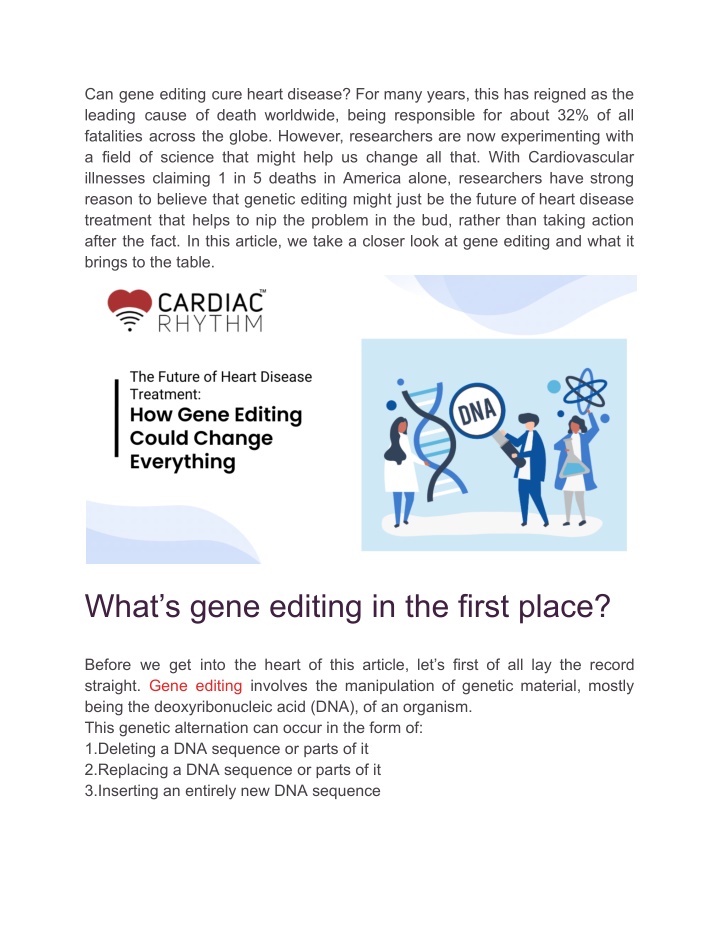
The Future of Heart Disease Treatment_ How Gene Editing Could Change Everything
Can gene editing cure heart disease? For many years, this has reigned as the leading cause of death worldwide, being responsible for about 32% of all fatalities across the globe. However, researchers are now experimenting with a field of science that
Download Presentation

Please find below an Image/Link to download the presentation.
The content on the website is provided AS IS for your information and personal use only. It may not be sold, licensed, or shared on other websites without obtaining consent from the author. If you encounter any issues during the download, it is possible that the publisher has removed the file from their server.
You are allowed to download the files provided on this website for personal or commercial use, subject to the condition that they are used lawfully. All files are the property of their respective owners.
The content on the website is provided AS IS for your information and personal use only. It may not be sold, licensed, or shared on other websites without obtaining consent from the author.
E N D
Presentation Transcript
Can gene editing cure heart disease? For many years, this has reigned as the leading cause of death worldwide, being responsible for about 32% of all fatalities across the globe. However, researchers are now experimenting with a field of science that might help us change all that. With Cardiovascular illnesses claiming 1 in 5 deaths in America alone, researchers have strong reason to believe that genetic editing might just be the future of heart disease treatment that helps to nip the problem in the bud, rather than taking action after the fact. In this article, we take a closer look at gene editing and what it brings to the table. What s gene editing in the first place? Before we get into the heart of this article, let s first of all lay the record straight. Gene editing involves the manipulation of genetic material, mostly being the deoxyribonucleic acid (DNA), of an organism. This genetic alternation can occur in the form of: 1.Deleting a DNA sequence or parts of it 2.Replacing a DNA sequence or parts of it 3.Inserting an entirely new DNA sequence
That being said, there are various types of genome or gene editing technologies or techniques, but the most common one is called CRISPR, which is short for Clustered Regularly Interspaced Short Palindromic Repeats. How gene editing could be a game changer Rectifying heart damage Due to restricting blood flow to the heart, many heart diseases result in tissue damage caused by extended periods of oxygen and nutrient deprivation. Oftentimes, this damage manifests as scars on the heart tissue, which take anywhere from a couple of weeks to many months to heal depending on the severity of the damage. Gene editing might just help improve this heart mending process, by accelerating the tissue restoration process after a significant cardiovascular event such as a heart attack or stroke, for example. Limiting cardiac dysfunction after ischemic injury Heart attacks can have varying effects on individuals. In the most severe cases, the heart might completely stop and is unable to kick back up again, which can lead to sudden cardiac arrest that can be potentially fatal. Gene editing might be particularly useful when it comes to restoring heart function in cases of IRI or ischemia-reperfusion IRI where, in the past, the patient may be considered to be beyond the point of return. This happens when ischemic heart tissues regain function but they then become dysfunctional or experience accelerated cellular death. In some cases, the damage can be so severe to the point that it is irreversible. According to a PubMed study featuring animal subjects, researchers were able to restore cardiovascular function in mice after IRI by injecting a genetic reagent that suppressed the CAMKII gene. While the same results haven t
been replicated in human trials, they still show great potential for what it could do. Preventing heart disease Gene editing has already been put to work in terms of making subjects more disease-resistant. In a study conducted by Uruguay s Pasteur Institute, researchers were able to leverage CRISPR technologies to make animals more resistant to respiratory diseases such as: 1.Swine flu 2.Pneumonia 3.Coronavirus 4.Parainfluenza, etc. Translating the same applications for the prevention of heart disease is not a far-fetched theory. With some mutations tripling the risk of heart disease, gene editing could be key to help lower the risk of these mutations in the first place by taking out and replacing problematic DNA sequences and genetic material at large. In fact, a report by Nebraska Medicine implies that 50% of heart disease risk has to do with our genetic makeup, which further strengthens the case for using gene therapy to counteract a genetic predisposition. Tackling cardiac sarcoma Although very rare, cardiac sarcoma is a type of cancer that particularly affects the heart. It may not feature in patients very often but when it does, it can be very life threatening. In fact, Medicine Net reports that the survival rates of cardiac sarcoma stand at just 11% past the first 5 years of diagnosis. However, genetic editing might yet come to the rescue in this regard. With CRISPR enabling treatment personalization in cancer patients, it s quite plausible to argue that it could have the same effect on cardiac sarcoma, which is essentially a cancer stemming from genetic mutations, just like other types of cancer. With cancers many times overpowering T-cells (white blood cells that fight cancer), gene editing can help to create superior versions of T-cells that exhibit lower exhaustion rates and heighten antigen responses. In other
words, gene editing might help reinforce T-cells so that they are much more capable of handling cancers such as cardiac sarcoma. Addressing high cholesterol It s a well-known fact that high cholesterol is a massive risk factor for heart disease, and for those already living with the condition, it can accelerate heart damage, worsen symptoms, and lower life expectancy. However, gene therapy might yet again be the light at the end of the tunnel as it may help combat high cholesterol. According to a study by NPR, CRISPR can be leveraged to lower the levels of bad cholesterol within the body. It may do this by altering certain genes in the liver that make us more susceptible to this type of cholesterol. Due to this, genetic editing may be key in alleviating diseases linked to bad or high cholesterol such as: 1.Coronary heart disease 2.Stroke 3.Peripheral vascular disease 4.High blood pressure 5.Diabetes, etc. That being said, it s important to note that the above study was conducted on just a patient size of ten subjects. So it certainly still needs a lot more testing but there are already many corners already labeling it as a potential landmark proof-of-concept. Gene therapy high potential but still a work in progress Gene editing or gene therapy shows massive potential when it comes to heart disease treatment, and it may just be the magic bullet that one day slays the heart disease pandemic once and for all. While gene therapy shows great promise in terms of the treatment, management and even prevention of heart disease, it s still far from the complete product. To stay ahead of the curve
when comes to heart disease and revolutionary cardiac technologies, be sure to regularly check the Cardiac Rhythm blog for updates.

